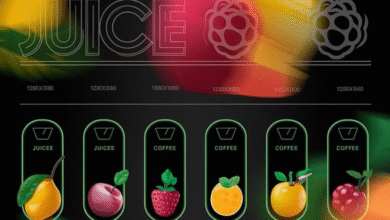Palentu: The Future of Eco-Friendly Construction Materials

Imagine a world where every building you see is not only strong and beautiful but also kind to the planet. That’s the promise of Palentu, a groundbreaking material that’s shaking up the construction industry. If you’re wondering what Palentu is and why it’s making waves, you’re in the right place. This article will take you on a deep dive into everything Palentu its origins, benefits, uses, and why it’s a game-changer for sustainable living. Whether you’re a homeowner, a builder, or just curious about green innovations, there’s something here for you. Let’s explore!
What is Palentu?
Palentu isn’t your average construction material. It’s an eco-friendly powerhouse made from a clever mix of recycled plastics, natural fibers, and bio-based resins. Think of it as a superhero in the world of building supplies strong, lightweight, and sustainable all at once. Designed to cut down on waste and energy use, Palentu is here to help us build smarter, greener homes and offices.
The Makeup of Palentu
So, what’s inside this wonder material? Here’s the breakdown:
-
Recycled Plastics: Up to 80% of Palentu comes from post-consumer plastics like water bottles and packaging that would otherwise end up in landfills.
-
Natural Fibers: Sourced from plants like hemp or bamboo, these add strength and flexibility.
-
Bio-Based Resins: These eco-friendly binders hold everything together, replacing the harsh chemicals found in traditional materials.
This combination doesn’t just make Palentu sustainable it makes it tough enough to stand up to the elements while keeping your carbon footprint low.
Why It Matters
In a world where construction accounts for nearly 40% of global carbon emissions, materials like Palentu are a breath of fresh air. By using recycled content and renewable resources, it tackles waste and pollution head-on. Plus, it’s versatile enough to fit into all kinds of projects, from cozy homes to towering office buildings.
The Benefits of Palentu: Why Builders Love It
Palentu isn’t just good for the planet it’s good for your projects too. Let’s break down why it’s becoming a go-to choice for builders and architects everywhere.
1. Eco-Friendly to the Core
Sustainability is Palentu’s middle name. Its production process uses less water and energy than traditional materials like concrete or steel. Plus, by recycling waste into something useful, it keeps landfills from overflowing. If you’re aiming for a green building certification like LEED or BREEAM Palentu can give you a serious leg up.
2. Built to Last
Don’t let its lightweight nature fool you Palentu is tough. It resists weathering, corrosion, and even fire, making it a reliable choice for long-term builds. Whether it’s facing rain, wind, or sun, Palentu holds its own.
3. Energy Savings Galore
Thanks to its excellent thermal insulation, Palentu helps keep buildings warm in winter and cool in summer. That means lower energy bills and a smaller environmental impact. Studies suggest it can cut energy use by up to 30% compared to standard materials.
4. Easy on the Wallet (Eventually)
Sure, Palentu might cost a bit more upfront than basic concrete or wood. But over time, its durability and energy efficiency save you money on repairs and utilities. Add in potential tax breaks for using sustainable materials, and it’s a win-win.
5. Lightweight and Flexible
Palentu’s light weight makes it a dream to work with. It cuts down on shipping costs and speeds up installation. Plus, it can be molded into all sorts of shapes beams, panels, even decorative cladding giving designers tons of creative freedom.
Palentu vs. Traditional Materials: A Head-to-Head Showdown
How does Palentu stack up against the classics like concrete, steel, and wood? Let’s put them side by side in a comparison table to see the differences.
Comparison Table: Palentu vs. Traditional Materials
|
Material |
Durability |
Weight |
Thermal Insulation |
Eco-Friendliness |
Initial Cost |
|---|---|---|---|---|---|
|
Palentu |
High |
Lightweight |
Excellent |
Very High (recycled) |
Moderate |
|
Concrete |
High |
Heavy |
Poor |
Low (high emissions) |
Low |
|
Steel |
Very High |
Heavy |
Poor |
Low (energy-intensive) |
High |
|
Wood |
Moderate |
Light |
Good |
Moderate (deforestation) |
Moderate |
What the Table Tells Us
-
Palentu shines with its balance of strength, light weight, and eco-friendliness perfect for modern, sustainable projects.
-
Concrete is affordable and durable but weighs a ton and isn’t kind to the planet.
-
Steel is super strong but costly and energy-hungry.
-
Wood is renewable but can’t match Palentu’s durability or fire resistance.
Palentu stands out as a versatile middle ground, offering benefits that traditional materials can’t quite match.
Where Can You Use Palentu?
One of Palentu’s biggest strengths is its adaptability. Here’s how it’s being used across different types of construction projects.
Residential Homes
-
Foundations: Palentu’s moisture resistance makes it a solid choice for basements and slabs.
-
Walls: Insulated Palentu panels keep homes cozy and quiet.
-
Roofs: Lightweight roofing tiles made from Palentu reduce structural strain.
Commercial Spaces
-
Facades: Sleek, weatherproof Palentu cladding gives buildings a modern look.
-
Insulation: Energy-efficient layers cut costs for big buildings.
-
Frameworks: Beams and columns provide sturdy support without the bulk.
Renovations and Retrofits
-
Upgrades: Swap out old materials for Palentu to boost efficiency in existing structures.
-
Additions: Its light weight makes it ideal for extensions that won’t overload foundations.
Specialty Projects
-
Tiny Homes: Palentu’s compact strength suits small, sustainable builds.
-
Disaster Relief: Quick to install and durable, it’s perfect for emergency housing.
How Palentu is Made: A Peek Behind the Scenes
Ever wondered how an eco-friendly material like Palentu comes to life? Here’s a step-by-step look at the process:
-
Collection: Recycled plastics are gathered from waste streams think bottles, containers, and packaging.
-
Processing: These plastics are cleaned, shredded, and mixed with natural fibers like hemp or flax.
-
Binding: Bio-based resins are added to create a strong, cohesive material.
-
Molding: The mixture is shaped into panels, beams, or whatever form the project needs.
-
Curing: A low-energy curing process hardens Palentu, readying it for use.
This streamlined process keeps emissions low and turns trash into treasure.
Getting Started with Palentu: A Practical Guide
Ready to bring Palentu into your next project? Here’s how to make it happen:
-
Find a Supplier: Look for distributors specializing in green building materials. Online searches or local construction expos can point you in the right direction.
-
Plan with Pros: Team up with an architect or engineer who knows sustainable design. They’ll help you maximize Palentu’s potential.
-
Train Your Crew: While Palentu is easy to handle, a quick training session ensures your team uses it right.
-
Check Incentives: Research local green building programs some offer rebates for materials like Palentu.
-
Start Small: Test it out on a single feature like insulation or cladding before going all-in.
The Science of Palentu: What Makes It Tick
Palentu isn’t just a random mix of stuff it’s a carefully engineered solution. Let’s geek out a bit on the science behind it.
Material Properties
-
Tensile Strength: Palentu can handle heavy loads without cracking, thanks to its fiber reinforcement.
-
Thermal Conductivity: Its low conductivity keeps heat where you want it inside in winter, outside in summer.
-
Fire Resistance: Special additives make Palentu slow to burn, meeting tough safety codes.
Environmental Impact Stats
Here’s a quick table to show Palentu’s green credentials:
|
Metric |
Palentu |
Concrete |
Steel |
|---|---|---|---|
|
CO2 Emissions (kg/m³) |
50 | 400 | 800 |
|
Water Usage (L/m³) |
20 | 150 | 100 |
|
Recycled Content (%) |
80 | 0 | 30 |
Palentu’s numbers speak for themselves it’s a sustainability champ.
Real-World Examples: Palentu in Action
Need proof Palentu works? Here are some projects where it’s shining:
-
The Green Haven House: A California home built entirely with Palentu panels, cutting energy use by 35%.
-
Eco-Office Tower: A 10-story building in Seattle uses Palentu cladding and insulation, earning top green ratings.
-
Tiny Village Project: A community of disaster-relief homes in Texas, built fast and strong with Palentu.
These success stories show Palentu’s potential to transform how we build.
Challenges and Solutions: Is Palentu Perfect?
No material is flawless, and Palentu has its quirks. Here’s a look at the challenges and how to tackle them.
Challenge 1: Higher Upfront Cost
-
Solution: Focus on long-term savings and seek out green building grants to offset the price.
Challenge 2: Limited Awareness
-
Solution: Spread the word! Share articles like this one to educate clients and contractors.
Challenge 3: Supply Chain Gaps
-
Solution: Partner with early adopters and advocate for wider distribution as demand grows.
The Future of Palentu: What’s Next?
Palentu is just getting started. Experts predict it’ll play a big role in the push for net-zero buildings structures that produce as much energy as they use. Researchers are also tweaking its formula to make it even stronger and cheaper. Could it one day replace concrete entirely? Time will tell, but the outlook is bright.
FAQ: Your Palentu Questions Answered
What exactly is Palentu made of?
Palentu is a blend of recycled plastics, natural fibers (like hemp), and bio-based resins, creating a strong, sustainable material.
How much does Palentu cost compared to concrete?
It’s a bit pricier upfront think 10-20% more but its energy savings and durability often make up the difference over time.
Can Palentu be used for outdoor projects?
Absolutely! It’s weather-resistant and perfect for things like siding, roofing, or even garden structures.
Is Palentu safe for homes with kids?
Yes, it meets fire and safety standards, and its non-toxic makeup makes it family-friendly.
Where can I find Palentu suppliers near me?
Search online for “eco-friendly construction materials” or check with local green building organizations for leads.
Wrapping Up: Why Palentu Matters
Palentu isn’t just a material it’s a movement. It shows us that building better doesn’t have to mean harming the planet. With its eco-friendly roots, impressive strength, and endless possibilities, Palentu is paving the way for a greener future. Whether you’re planning your dream home or a massive commercial project, it’s worth a look. Ready to build smarter? Palentu’s got your back.



